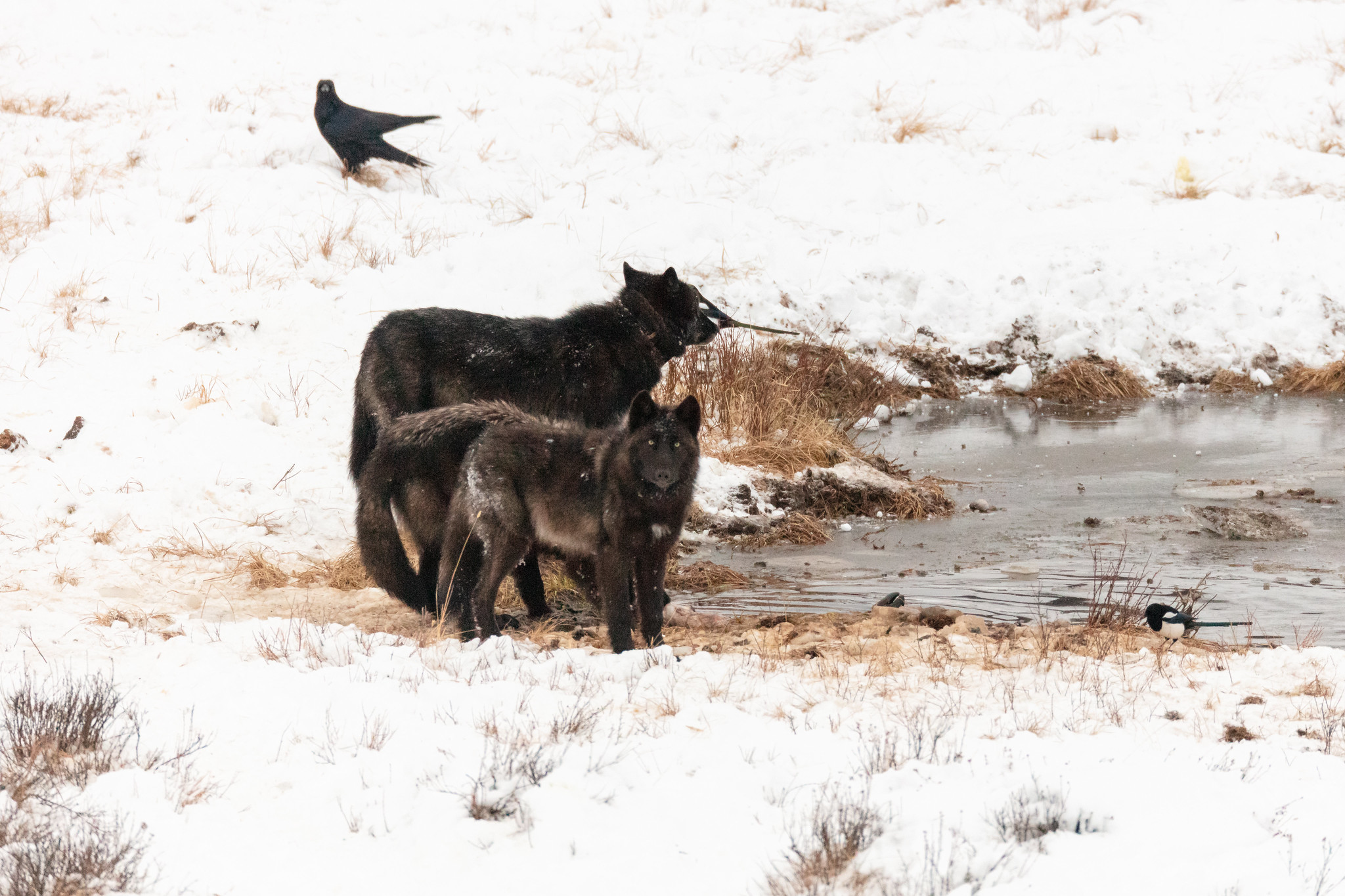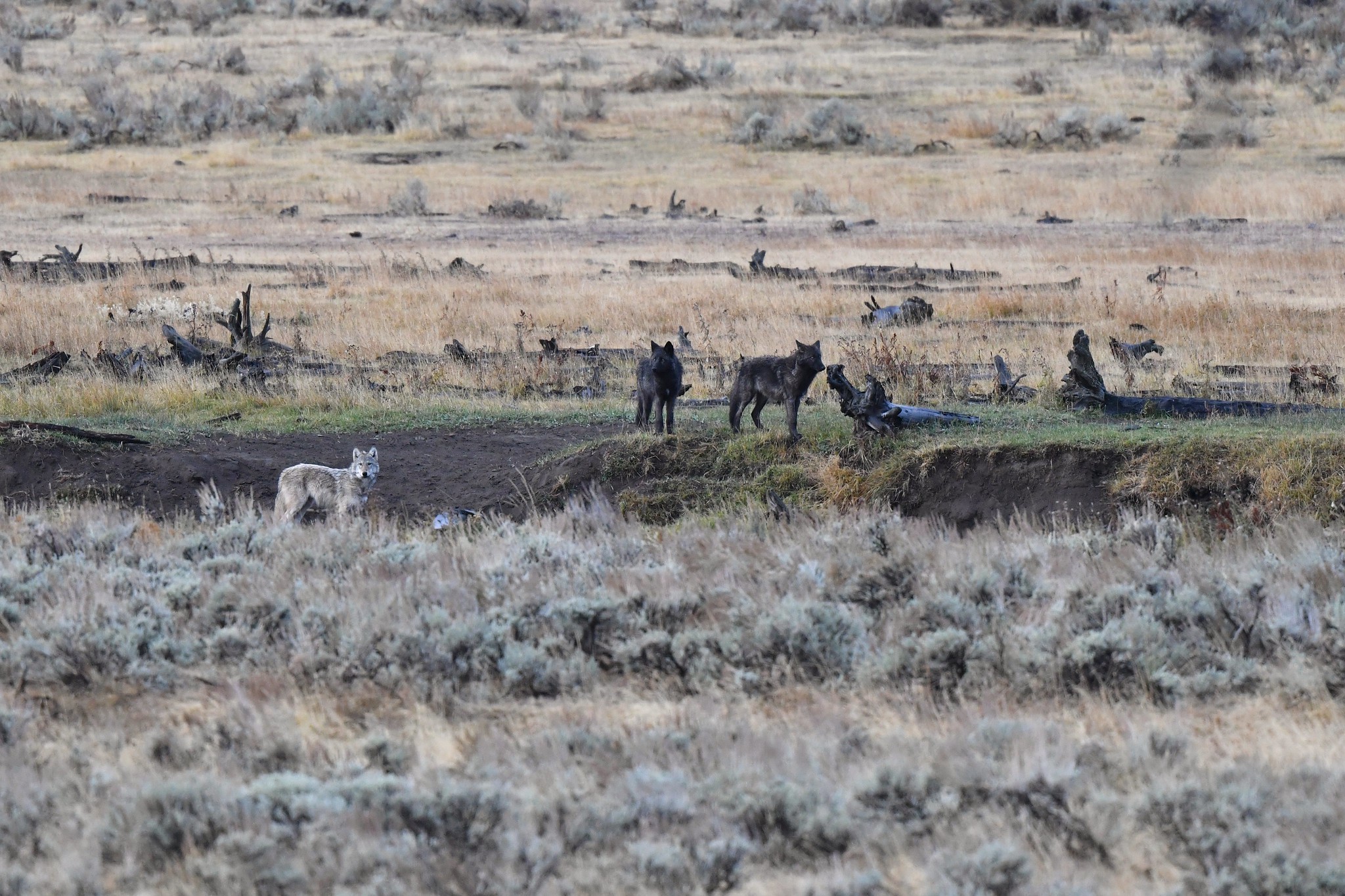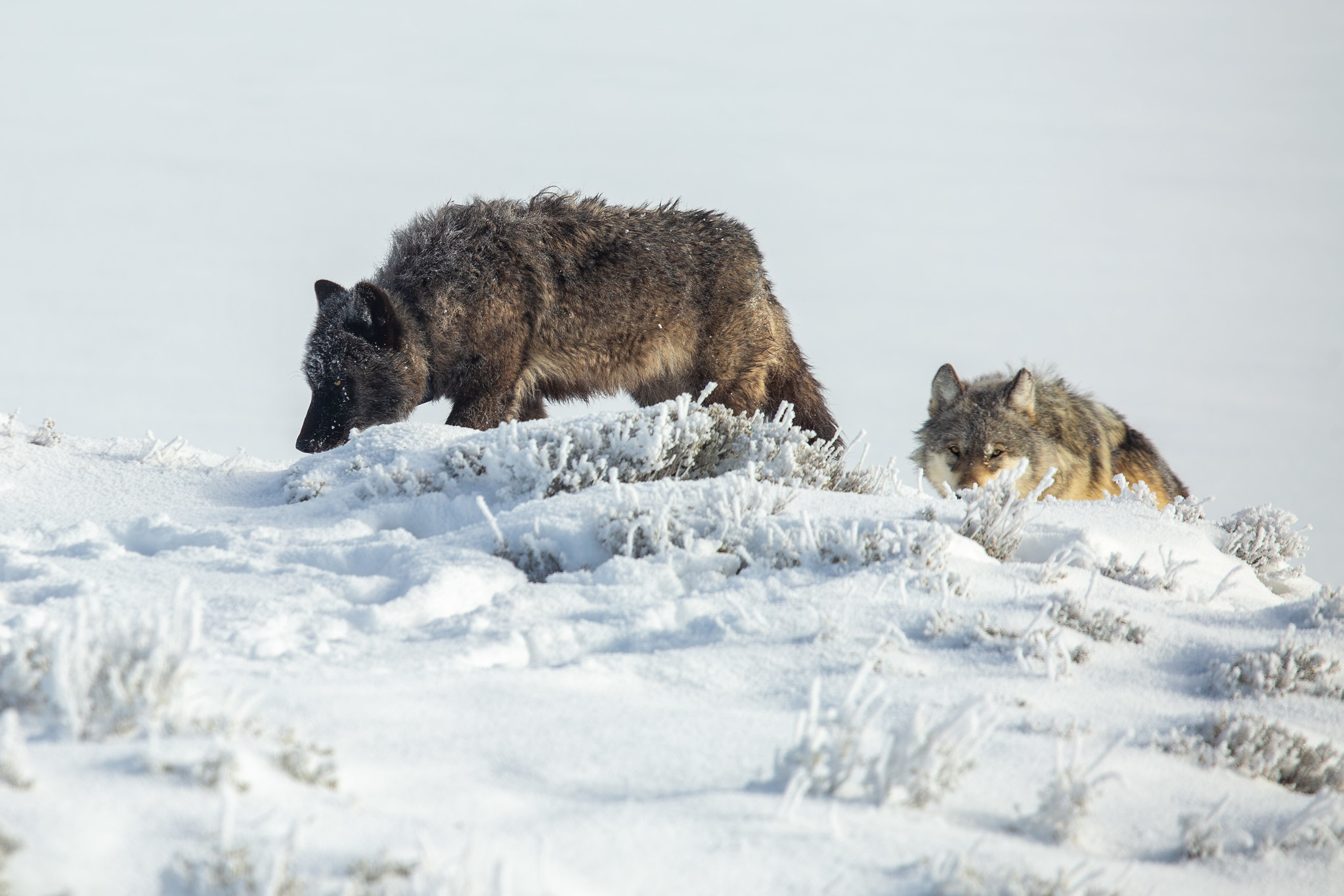 **** Tells the story of an unlikely hero
**** Tells the story of an unlikely hero
Ever since wolves were reintroduced into Yellowstone National Park in 1995 they have been intently observed by biologists and wolf enthusiasts. Amongst these, biological technician and park ranger Rick McIntyre has to be the most dedicated, having watched these wolves from dawn to dusk every day for around two decades now. The Redemption of Wolf 302 is the third book in the Alpha Wolves of Yellowstone series and tells the story of an unlikely hero.
Though this book can be read by itself, you will get more enjoyment out of the unfolding multi-generational story arc if you read the previous two instalments. Furthermore, McIntyre refers to earlier wolves quite frequently and this book picks up right where The Reign of Wolf 21 ended, meaning the earliest part of wolf 302’s life is not told here. However, a brief introduction brings you up to speed.
One thing this book makes clear is that wolves have individual characters. Whereas wolves 8 and 21 were devoted males looking out for their pack, the current protagonist is anything but. With the death of 21 in 2004, the second-ranking male 253 temporarily takes over but is quickly ousted by two neighbours from the Leopold Pack: 302 and his younger nephew 480. 302, however, is not a natural leader. An increasingly baffled McIntyre spends the first half of the book describing many instances of his unusual behaviour: he runs away during confrontations with other packs, quickly becomes subordinate to his much younger nephew 480, sneakily tries to mate with females when 480 is distracted, occasionally steals food from pups, and is easily spooked by prey carcasses moving when his packmates tear pieces of meat off them. When 302 snoozes on a nearby hill while the Druids battle a rival pack, ignoring their howls, McIntyre seems truly exasperated: “I had been rooting for 302 to do better in life for over four years, but his total noninvolvement as 480 rushed to confront these wolves made me think 302 was a lost cause” (p. 118).

As a consequence, the first part actually revolves around male 480 who steps up as the new Druid alpha male. Through the years 2005 and 2006 McIntyre witnesses the waxing and waning of power between the packs. Several Druid wolves are killed by the neighbouring Slough Creek pack in 2005 and the Sloughs expand their territory aggressively. The tide turns from 2006 onwards, though, when an unknown pack moves in from the north and subjects the Slough’s breeding den to a brutal siege and later kills its adult males. Subsequent accidents and poor breeding seasons for the Sloughs allow the Druids to regain much of their territory by 2008.
It takes until 2007 for wolf 302 to redeem himself, by which time he is over 6.5 years old, well beyond the average lifespan of wolves in Yellowstone. He finally starts helping the Druid females and pups, and assists male 480 during hunts and fights with other packs. By 2008 he leaves the Druids with a group of yearlings in tow and, together with a female from the Agate Creek pack, forms the newly-named Blacktail pack. In one example of stories coming full circle in this book, 302 takes up residence in the territory of the now-extinct Leopold pack, the same territory he was born in. Without giving away further spoilers, several other storylines come full circle at the end of 302’s life. Although not tugging on the heartstrings quite as much as the story of wolves 21 and 42, I was nevertheless so invested emotionally in the fully-lived lives of these wolves that by the end of the book I struggled to hold back tears. 302 ultimately transitions from a rebel to an alpha wolf deserving of that status.

If you read the previous books then you know what to expect: no embellished writing but a detailed rendition of McIntyre’s field notes that recounts the day-to-day lives of these wolves. This book retains the same structure as The Reign of Wolf 21: short chapters bundled into parts, one part for each year. McIntyre has reverted to putting just one map with home ranges at the start of the book, together with diagrams of the changing pack compositions over the years. The Reign of Wolf 21 put maps and diagrams at the start of each part, which was a useful convention that helped keep track of all the players. It looks as if McIntyre decided that was not necessary for this book as it follows fewer packs.
Like previous volumes, this book overflows with interesting biological observations on e.g. play behaviour of pups and interactions with other species such as bears and ravens. A notable problem is the outbreak of mange, a mite-caused disease that leads to fur loss. Research using infrared cameras has shown the substantial loss of body heat this causes, and the resulting deterioration of health in the subzero temperatures of Yellowstone winters. McIntyre furthermore uses one chapter to shortly summarize observations on wolf injuries and mortalities that he mentioned in this and the previous two books. His observations mirror those of Wolves on the Hunt which showed wolves regularly suffer serious injuries while hunting prey, from broken ribs to fractured jaws. Sometimes these are fatal, though more wolves die as a result of fights with other wolves.

As before, McIntyre rarely inserts himself in the narrative. He mentions notable visitors to the park and personal achievements such as his nine-year streak of daily observations, even when temperatures drop to lows of -44°C. There are two other striking examples of McIntyre’s detachment in this book. One is an incident where he leaves an injured wolf after several hours of observation and finds him dead the next day. McIntyre sticks to an iron rule that he is here to observe, not to interfere, and that means all facets of life and death in the natural world. The second incident is the start of the wolf-hunting season in Montana when wolves are removed from the endangered species list in 2009. The wolves in Yellowstone National Park are still protected, but those venturing outside are at risk. Despite expressing his concern for their safety, he refrains from giving his personal opinion on the hunting of wolves.
This series was originally going to be a trilogy, but by the end, McIntyre foreshadows the subject of the fourth book: the alpha females, particularly female 06. Named after her year of birth, 2006, she was a granddaughter of male 21 and was legendary for her fierce independence. Though she has been the subject of Blakeslee’s book American Wolf, McIntyre is uniquely placed to give an account of her life. For now, wolf aficionados can delight in The Redemption of Wolf 302. With each book, the payoff of following their story in this level of intimate detail is getting bigger – these books are in a class of their own.
The Redemption of Wolf 302 is available from our bookstore.






